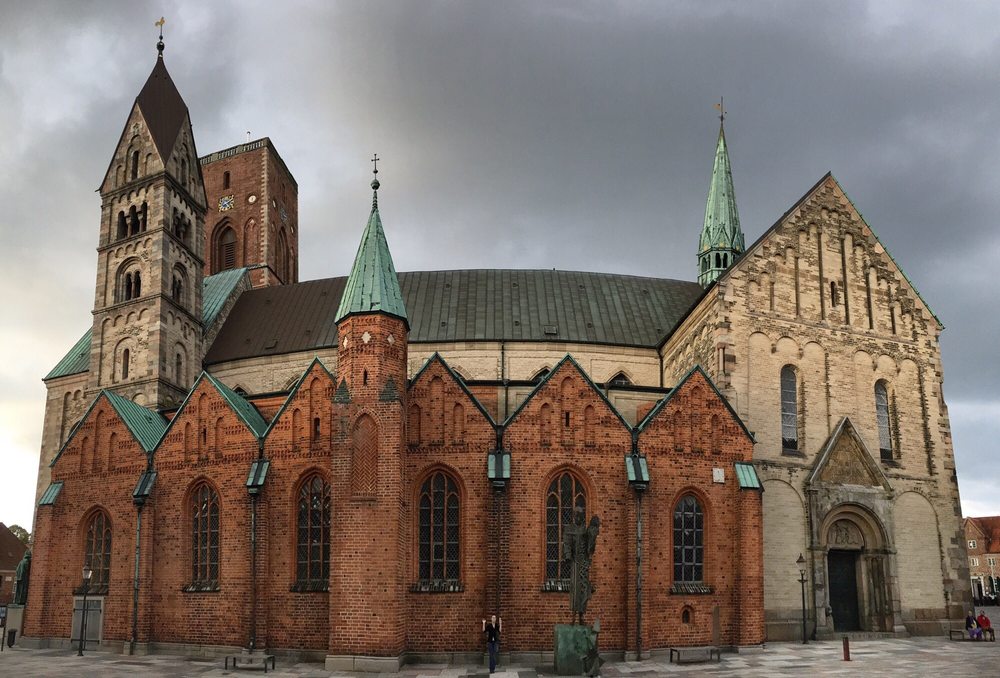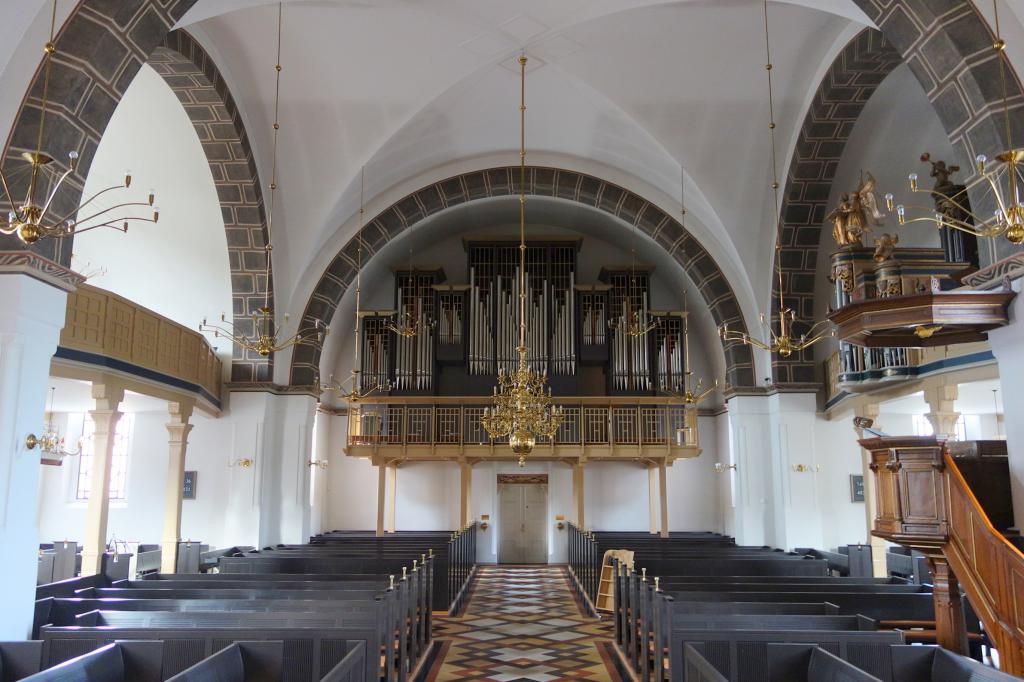Christianity in the form of an evangelical Lutheran church is not only the dominant, but also the official religion of Denmark. Therefore, this country is not secular, since there is a clear connection between the church and the state with the post of Minister for Spirituality. The ruling monarch acts as the highest secular authority of the Danish National Church, otherwise known as the People's (Dansk Folkekirke). This status and name, as well as the support of the official church by the state, were determined by the Danish constitution of 1849. Although belonging to the national religion in the country is considered a voluntary right, as of January 1, 2017, 75.9% of the Danish population are members of the Dansk Folkekirke. However, the Danes cannot be called a particularly religious people, and the structure of the state church is conservative.
Lack of central authority
In practice, the Danish People’s Church does not have an official position regarding political or other state issues, since there are no central governing bodies or a spiritual leader in its structure that could determine such principles. Bishops have the final say on doctrinal issues in their dioceses.
The Queen (in fact, Minister of Spiritual Affairs) and Parliament are the dominant structure, which usually adheres to administrative matters and refrains from interfering in the affairs of religion of Denmark. Church laws rarely change, and when this happens, only administrative issues are raised. Church affairs are managed through the episcopate, dioceses, parishes, and voluntary communities.
Leadership and Dioceses
The Danish Church continues to be supported by the historical episcopate. Theological authority belongs to eleven bishops - ten on the mainland and one in Greenland, each of which controls his diocese. The archbishop is absent in the structure. The Bishop of Copenhagen (currently Peter Skov-Jacobsen) acts as primus inter pares, that is, senior among equals in office. Eleven dioceses are divided into 111 deaneries and 2,200 parishes. About 2,400 ordained priests or pastors serve in the country.
Parishes and voluntary communities
Each parish has its own council, elected by church members for a four-year term. The parish council oversees the practical affairs of the local church and solves the issues of staff employment, including pastors, musicians, and other church attendants. The pastor obeys the council, with the exception of spiritual matters such as church services and pastoral care. Deans, parish councils and pastors are subordinate to the bishop of the diocese.
A feature of the main religion of Denmark is the possibility of creating voluntary communities in the churches, which account for a few percent of the members of the Church. These associations can elect their parish council and pastor, who are willing to pay from their own pockets. In turn, members of voluntary communities are exempt from church tax, but, like the pastor they hired, are subordinate to the bishop of the diocese. Today, voluntary congregations are often the solution for parishioners who find the idea of a free church attractive, but want to keep in touch with the national religion.
History and traditions
Briefly about the religion of Denmark, it can be reported that in the 9th century, Ansgar, the archbishop of Hamburg and Bremen, the so-called Apostle of the North, began to spread Christianity in the country. In the X century, the Danish king Harald II adopted Christianity, began the construction and organization of churches. By the XI century, the Christian religion was adopted mainly throughout the kingdom. After the Reformation in the country, the Church of Evangelical Lutheranism was recognized as state, while retaining most of its former liturgical traditions. The Constitution from 1849 defined the Danish People's Church, provides for its state support.

The monarch, as the supreme secular authority of the state church, must be a member of it, according to the sixth constitutional article. This also applies to Danish princes and princesses, but is not considered mandatory for their spouses. Traditionally, however, every foreigner who becomes a member of the royal family becomes converted to the Danish Church. So, the Catholic Prince Consort Henrik decided to become a follower of the official religion of Denmark before marrying the Queen in 1968. Mary Donaldson also moved from Presbyterian marriage to Crown Prince Frederick in 2004.
Membership, Faith, and Church Attendance
According to official statistics for January 2017, 75.9% of Danes are followers of the People’s Church. This indicator ranges from 58.1% in the Diocese of Copenhagen, to 85.2% in the Vyborg. In recent decades, the number of Church members has been gradually declining, with immigration from non-Lutheran countries being considered the most important reason.
Any person in Denmark, no matter what religion his parents belong to, having passed the Baptismal rite in the church, automatically becomes a member. Believers can abandon their church affiliation, then return again if they wish. Excommunication by law is possible, but it is an unusually rare occurrence, examples of which include only declared Satanists. Once, excommunication was applied to a member of the Church who supported reincarnation, but was canceled by a Supreme Court decision in 2005.
Doctrines, liturgy, rites
In 1992, the Queen authorized the revised translations of the Old and New Testaments. In 2003, the edited Book of Anthems was allowed. Both translations of the Bible and the Book of Anthems involved extensive public and theological discussion.
The liturgy in the religion of Denmark remains the most important Christian worship. The sacred action of the sacrament includes three readings from the Bible: the head of a gospel, the head of the Epistles, or another part of the New Testament, and since 1992 the chapter of the Old Testament has also been read. Texts are selected from the official list after the church year. Some liturgical functions have a fixed content, but are free from the form of their presentation. As in other Lutheran churches, the Church of Denmark recognizes only two sacraments, Baptism and the Lord's Supper. They are usually included in the Communion Service.

Sermon, as in other Protestant churches, is a central part of every service. The official ritual of confession still remains, but is currently used very rarely. There are also formal rituals for baptism, weddings, blessings, same-sex marriage, confirmation, burial. Any Christian can perform emergency baptism, if necessary, and later the child will be confirmed in the Church.
Ritualism and family traditions
According to the latest survey, only 2.4% of parishioners attend services every week. On Christmas Eve, more than a third of the country's population participates in divine services. Nevertheless, most Danes still use the church exclusively for traditional family ceremonies, including baptisms, weddings, confirmation, funerals. In 2015, the Danish Church held 33.8% of weddings and 83.7% of all funerals registered in the country. In the same year, 71% of adolescents of grades 7-8 were confirmed, which is not surprising, because the Danes treat this ritual with greater reverence than weddings.
Female clergy
The priesthood of women has been discussed in the Danish Church since the 1920s. This happened for the first time, despite strong opposition from the clergy, in 1948, after a parish council was sent to the Minister of Spiritual Affairs, who wanted to hire a priest woman. The Minister decided that there was no legal obstacle to this. The first woman to become bishop in Denmark was established in 1995. Today, two-thirds of theological students are female, and their number is expected to prevail over the male clergy in the near future. However, among a small conservative minority, resistance to this trend remains.
Other church communities
What faith in Denmark is recognized among Christians besides evangelical Lutheranism? The country has a small number of Catholics and Protestant denominations such as the Danish Baptist Union and the Reformed Synod of Denmark. In percentage terms, the Christian population in the country was distributed as follows:
- Protestantism - 67.4%;
- Orthodox Christianity - 2.0%;
- the Catholic Church - 1.3%;
- other Christians - 7.5%.
Other faiths and beliefs
Which religion in Dani is most common after Christianity? Islam is the largest faith of Danish minorities. According to the US Department of State, approximately 3.7% of Denmark's population is Muslim. Danish Foreign Ministry sources cite lower interest rates. According to the BBC, about 270 thousand Muslims live in the country, which is 4.8% of 5.6 million people.
The Jewish community has been present in Denmark since the 17th century, when the royal government allowed the Jews to live in the state and practice their religion on an individual basis. Most Jews were completely assimilated in Danish society until the end of the 19th century. At the beginning of the 20th century, the flow of East European Jews increased in the country. Today, there are about 10,000 ethnic Jews in Denmark, and there are three synagogues in Copenhagen.
It should also be noted that according to statistics from Aarhus University in 2009, there were 20,000 practicing Buddhists in the country. The followers of the Bahá'í Faith in 2005 were about 1,251. Received state recognition in 2003, the Vanatri Association in Denmark, which adheres to the old Scandinavian convictions and declares the revival of paganism, prevalent in the country before Christianization, has 500 registered followers. 9.1% of the country's inhabitants consider themselves to be agnostics, and 10.6% - atheists.